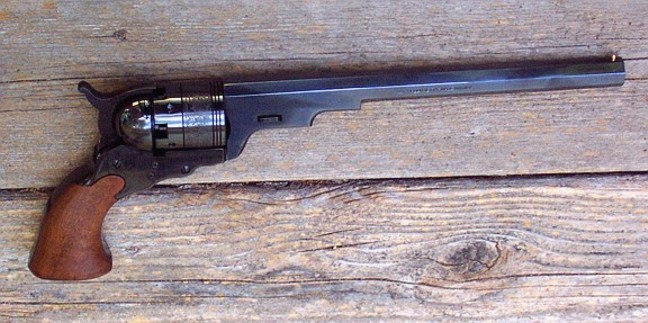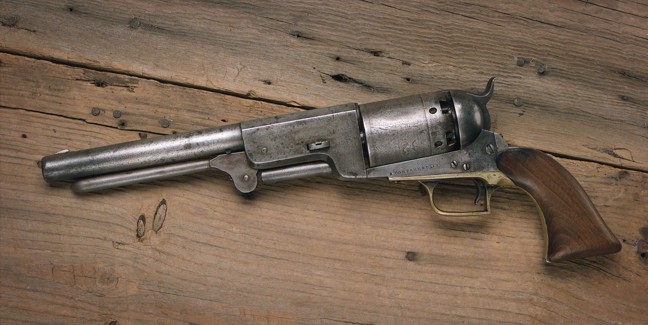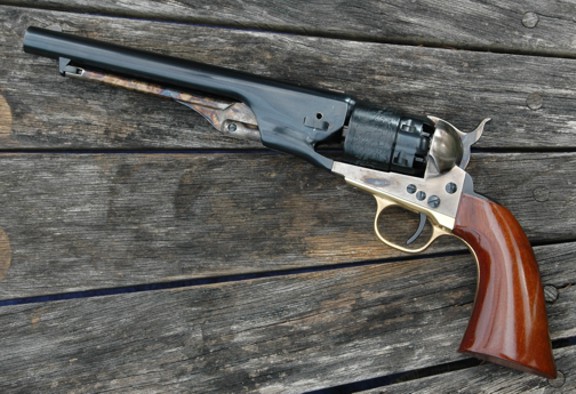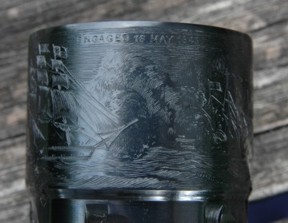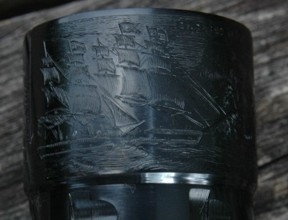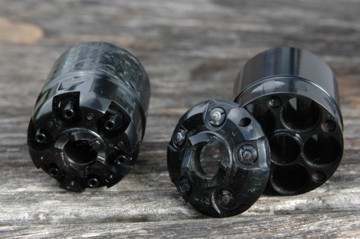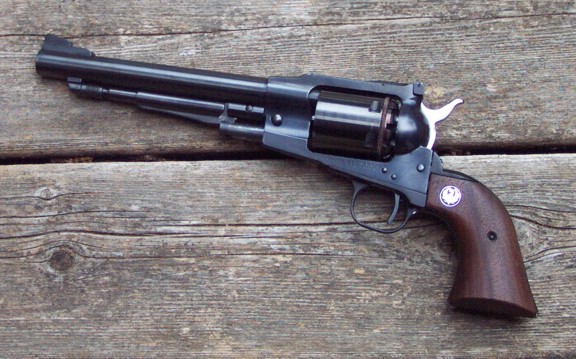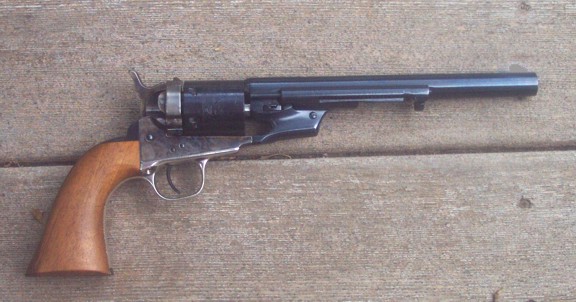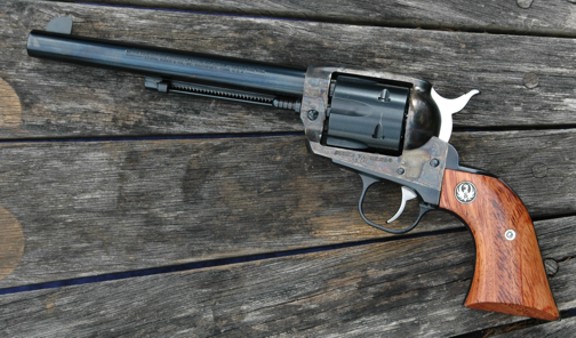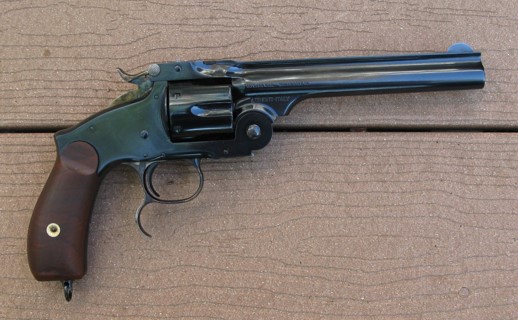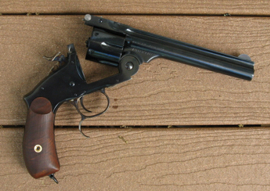|
|
|||||||
 |
 |
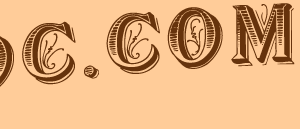 |
 |
||||
|
|
|
|
|
|
|
||
|
There could be a number of starting points for a story on handguns of the old west. I have chosen to start with the Colt Paterson, the first
practical multiple-shot revolver using a percussion cap to ignite the powder shooting a round lead ball. The single shot muzzleloading firearms
that preceded the Paterson are covered in the story on "Early Muzzleloading Pistols and Rifles"
in this website. For more information on the percussion cap firearms and their successors described in this story, the reader is referred to the
references listed at the end of the story. Although the idea of a revolving cylinder had been around for some time, it took Samual Colt's inventiveness and the emerging technology of
percussion caps to make the concept a reality. Colt obtained a patent for a repeating firearm in 1836 and began manufacturing the Colt Paterson
model revolver in 1837 in his shop in Paterson, New Jersey, hence the name of the gun. According to Flayderman (reference listed below), the first
Paterson model was a pocket model: a five-shot .28 caliber percussion (cap and ball) revolver with barrel lengths which ranged from 1.75" to 4.75"
and all without attached loading levers (this model is sometimes referred to as the Baby Paterson). A later Paterson model (No. 5 with manufacturing
started in 1838) was a five-shot .36 caliber percussion revolver with a 4" to 12" barrel and folding trigger (the trigger emerged when the hammer
was cocked--a feature of all Paterson Colts). The model No.5 was referred to as the Texas Paterson because of its use by the Texas Rangers (see
paragraph below.) Colt firearm experts P. R. Phillips and R. L. Wilson describe with photographs 20 different Paterson variations produced by Colt,
excluding variations in barrel length, in different calibers with and without attached loading levers. Note: For firearm history buffs, Wilson
also writes about the extremely rare pre-Paterson Colt revolver prototype pictured in his article "The Transition from Flintlock to Percussion
Ignition" in the 3rd Edition of the Blue Book of Modern Black Powder Values. The prototype was made in 1835, pre-dating Colt's revolving
cylinder patent, and was a .358 caliber, six-shot revolver with a five-inch barrel and folding bayonet.
The five-shot Paterson revolver model with a 9 inch barrel in .36 caliber became an immediate success with the Texas Rangers who acquired the weapon from the stores of the decommissioned Republic of Texas Navy in 1844. Prior to the use of multiple-shot revolvers, Indians had been able to draw the fire of single-shot guns and would renew an attack before the guns could be re-loaded. In 1844, fifteen Rangers led by Captain Jack Hays first used the Colt Paterson and defeated a band of 80 Comanches at the battle of Walker Creek northwest of San Antonio. With the five-shot Paterson, the Texas Rangers changed forever the rules of engagement in frontier Indian fighting. Unfortunately, there were few buyers for the Colt Patterson which was considered too delicate by many and Samuel Colt went into bankrupcy. A reproduction of the Colt Paterson made by Pietta is pictured below. The engraving on the cylinder depicts a stagecoach hold-up scene (according to Flayderman, only the No. 5 Paterson had this hold-up scene engraving...other Paterson models have a Centaur scene engraved on the cylinder). In a later design, a loading lever was added to the frame of the gun under the barrel to make it easier to load the cylinder (the loading lever was used to push the lead ball down into the cylinder on top of the powder). That loading lever design element was included on future Colt percussion handguns (see the photo of the Walker below.)
The Walker Colt design was a joint venture by Samuel Colt and former Texas Ranger Samuel H. Walker in 1847. Colt's goal was to produce a revolver with improvements over the Paterson model which Colt wanted to sell to the Army (and pull himself out of bankruptcy). Walker had been impressed with Colt's Paterson revolver and was interested in helping create the gun that Colt envisioned. The result of this venture was the first six-shot .44 caliber revolver. The gun had a 9-inch barrel and was 15.5 inches long overall. In his Winter 2000 Texas Ranger Dispatch article, Stroud further notes that the pistol weighed a massive four pounds and nine ounces with .44 caliber cylinders holding 50 grains of black powder firing a conical bullet of 220 grains. This gun was to be remain the most powerful handgun ever produced until the introduction of the magnum revolvers in the mid 1930s. In his article, Stroud included an evaluation of the pistol's performance which indicated that the Walker was as effective as a common rifle at 100 yards. Because of its weight and size, the Walker pistol was impractical for most people. The pistol often had to be carried in cases strapped to
the pommel of a horse. The gun was used by and did became popular for some of the Texas Rangers in the 1946-48 Mexican War. The picture below of this gun
was obtained and used, with permission, from the Texas Ranger Hall of Fame and Museum in Waco, Texas. The engraving on the cylinder depicted the battle of the
Rangers with the Comanches at Walker Creek when the Colt Paterson was first used in battle by the Rangers. Although this massive gun was later
replaced by other models, including the Colt 1860 Army Model described below, Stroud notes that the Walker is a prized collector's item. He also notes
only 168 are known to exist today commanding prices of up to $100,000 or more. (A 2006 auction brought $300,000 for a Walker.) Stroud repeats
Sam Colt's warning to "beware of counterfeits." Copyright 2005, Texas Ranger Hall of Fame and Museum, Waco, Texas The Colt 1860 Army Model was a scaled down version of the Walker Colt weighing only two pounds, 11 ounces with an eventual standard 8-inch barrel, again firing six round lead balls of .44 caliber. In his Spring 2002 Texas Ranger Dispatch article, Stroud describes the pistol as having a cylinder roll engraved with a scene of the Texas Navy engaging the Mexican fleet. This scene commemorated the defeat of the Mexican Fleet by the Texas Navy at the battle of Compeche in 1843. The gun became the standard weapon of the Union Calvary during the Civil War and, after the war, was used by gunfighters and lawmen alike, including the Texas Rangers. Reproductions of the gun have been popular with many cap-and-ball black powder competitors in cowboy action shooting. Pictured below is the Cimarron/Uberti version (complete with the above described engraving). It is referred to as an "open top" model to distinguish it from other 1860 Army Model reproductions which have a steel frame over the cylinder (see information on the Remington below). Below the picture of the gun are two enlarged pictures of the cylinder showing the engraving of the Texas Navy engaging the Mexican fleet and the date of that engagement (16 May 1843). This picture is, again, courtesy of my son-in-law, Bill, who got out an assortment of umbrellas, stands, lighting aids, and other photographic equipment to pick up the engraving on the cylinder.
As an aside, it can be noted that those not yet ready to shoot black powder in competition (such as myself) can purchase after-market conversion
cylinders which replace the cap-and-ball percussion cylinder with a cylinder able to shoot cartridges such as the .45 Long Colt. Black powder
shooters definitely have fun with the original cap-and-ball black powder pistols, but shooting one of the 1860 Army reproductions with a .45 Long
Colt cartridge in a conversion cylinder provides a similar delightful experience in shooting one of the classic guns of the old west. In the picture
below (also taken by my son-in-law), the Cimarron/Uberti open top Army model original .44 caliber cylinder (on the left) is placed alongside of
a .45 Long Colt conversion cylinder. A similar conversion cylinder is also available for the Walker Colt described above, also using .45 Long Colt
bullets.
In producing his New Army Model pistol, Remington introduced serious competition for Colt's guns. Used by both Union and Confederate soldiers, the 1858 New Army Remington revolver had several enhancements including a more sturdy single frame construction with the steel frame enclosing the cylinder. (The Colt Paterson, Walker, and 1860 Army models had two-part frames with the barrel separating from the rest of the frame to remove the cylinder.) Pictured below is the Ruger Old Army .44 cap and ball pistol (with "modern" adjustable sights) modeled after the Remington construction. The Ruger Old Army is a favorite percussion revolver among black powder cowboy action shooters for its ease in cleaning...and a .45 Long Colt conversion cylinder is also available for this gun as well as the Reminton model.
A final chapter in guns of the old west came with the production of the metallic cartridge and breech loading revolver which eliminated the need for placing caps on the cylinder and
packing powder and balls into the cylinder. The first self-contained cartridge was today's popular .22 caliber rimfire, patented by Smith & Wesson in 1854 (see Adler's article on cartridge
conversions in the second edition of the "Blue Book of Modern Black Powder Values"). Smith and Wesson additionally patented and produced the first cartridge revolver in 1856 (having to
wait for the expiration of the patent that Colt had for the mechanically rotating cylinder). Smith and Wesson couldn't produce enough of their guns for the Army, however, nor compete
with the low cost of Colt's guns.
Although Colt was convinced at the time that the percussion revolver would never be replaced, with the success of the cartridge revolver (and the expiration of the Smith and Wesson
patent), Colt turned his attention in 1871 to inexpensively converting cap and ball revolvers to cartridge revolvers for the Army. These early conversions included the first, but
not-too-successful, Thuer conversion, and the very successful Richards and Richards-Mason conversions which followed. Pictured below is the Armi San Marco reproduction of the Richards
conversion of the open top Colt 1860 Army--note the rear sight on the barrel (not on the hammer per the 1860 Army and the Richards-Mason conversion). The cylinder's engraving is again
that of the Texas Navy engaging the Mexican fleet similar to that of the Colt 1860 Army model photographed above. The Richards conversion was manufactured by Colt from 1873 through 1878.
In what was probably the crowning achievement of his long career in the design of the revolver, however, Colt introduced in 1873 the single
frame .45 caliber Single Action Army (SAA) revolver. Often referred to as the Peacemaker or Equalizer, this gun has also been labeled the
"gun that won the west." The Colt 1873 SAA design is very popular with cowboy action shooters, and many manufacturers make reproductions of this
classic design. Ruger came out with its SAA Vaquero model in 1993 (pictured below with a 7.5-inch long barrel) and quickly gained a deserved
reputation for durability and reliability that won the hearts of many cowboy action shooters.
A story on handguns of the old west would not be complete without mentioning the Smith & Wesson top break revolver, a gun whose barrel tipped down and simultaneously ejected all empty
shells and could be reloaded quickly. The #3 American model in a .44 caliber was in fact adopted by the U.S. Army in 1870 as their first center fire revolver, and as might be expected
was preferred by many Army officers and men to the cap and ball Colt 1860 Model for speed in loading (remember that Colt was still
waiting for the patent to expire on the Smith & Wesson metallic cartridge.) Colt's 1873 single action .45 caliber revolver was subsequently adopted by the Army when it came out...but the story
continues when a Calvary Officer, Major George Schofield, patented several modifications to the #3 American, including the use of a new .45 Smith & Wesson caliber. Now called the
the .45 Schofield revolver, it was approved by the Army as a subsitute option for the Colt. The Army was not happy with the new bullet, however. It was shorter and less powerful than
the .45 LC and few of the revolvers were bought. The civilian population was more interested in the fast loading gun and counted both lawmen and outlaws as proponents (Frank and Jesse
James, John Wesley Hardin, Pat Garret, and Virgil Earp to name a few.) The biggest supporter of the top break model, however, was the Russian military. With a few modifications (a new
.44 "Russian" caliber shell, adding a lanyard ring and trigger spur, etc.) the Russian government bought large numbers of the revolver. Pictured below is Uberti's reproduction of the #3 New
Model Russian in a .45 LC caliber with a 6 1/2" barrel. Below that photo is another showing the top break feature of the revolver.
References for story:
|
|||||||
|
|
|||||||
|
|
|||||||
|
|
|||||||
